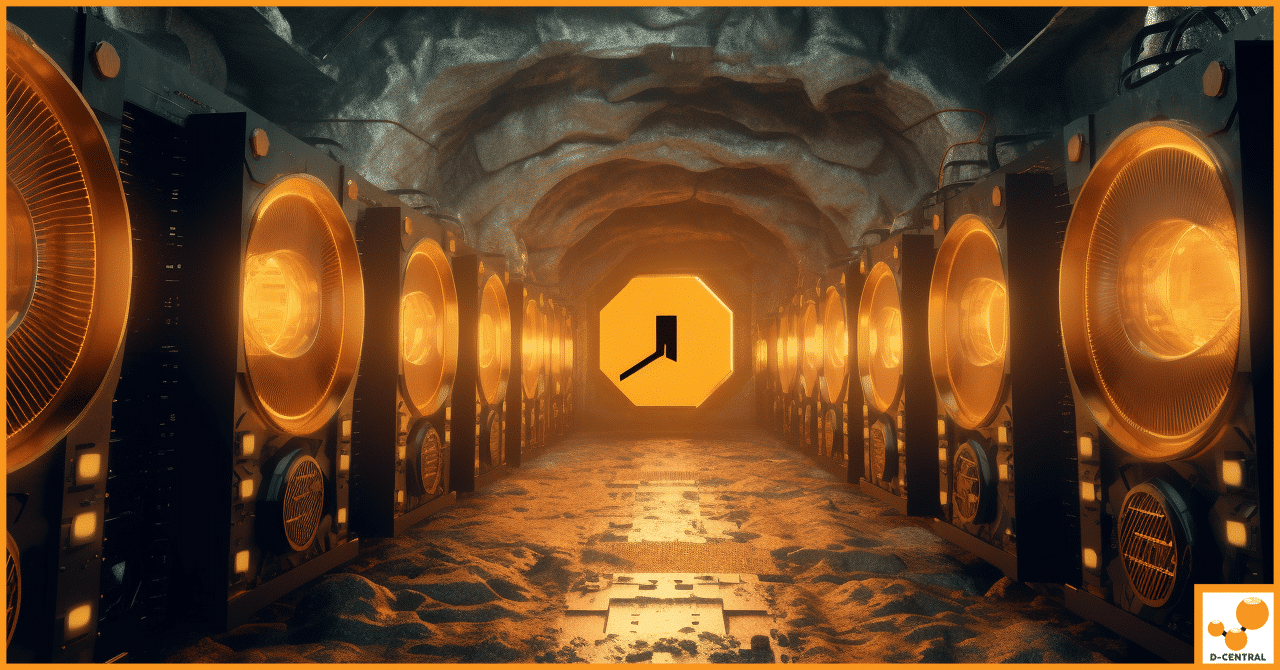
My ASIC Miner Isn’t Working! Can ASIC miners be repaired?
In the ever-evolving world of cryptocurrency mining, Application-Specific Integrated Circuit (ASIC) miners have emerged as pivotal tools. These specialized devices
4479 Desserte Nord Autoroute 440, Laval, QC H7P 6E2

In the intricate and ever-evolving world of Bitcoin mining, the tools and technologies employed play a pivotal role in determining the efficiency and profitability of mining operations. At the heart of this technological revolution are ASIC (Application-Specific Integrated Circuit) miners, specialized devices engineered exclusively for the purpose of mining cryptocurrencies like Bitcoin. These powerful machines have transformed the landscape of cryptocurrency mining, shifting the focus from general-purpose hardware like CPUs and GPUs to highly specialized and efficient ASIC units.
The topic at hand delves into the remarkable advancements in the speed of ASIC miners, a key factor that has been reshaping the dynamics of Bitcoin mining. Over the years, these miners have undergone significant transformations, not just in their physical design but more importantly, in their operational capabilities. The speed at which these machines operate is crucial, as it directly correlates to the effectiveness and success of mining activities. The ability of ASIC miners to perform complex cryptographic calculations at unprecedented speeds has not only intensified the mining process but also heightened the competition within the mining community.
This article aims to explore the trajectory of these advancements, examining how the increase in speed of ASIC miners has impacted the Bitcoin mining industry. We will delve into the technological innovations that have driven these changes, the challenges and opportunities they present, and what the future might hold for ASIC mining. As we navigate through this exploration, we will also shed light on the role of industry leaders like D-Central Technologies, who are at the forefront of this technological evolution, continuously pushing the boundaries of what is possible in ASIC mining.
ASIC miners, or Application-Specific Integrated Circuit miners, are specialized hardware designed exclusively for cryptocurrency mining. Unlike general-purpose hardware like CPUs (Central Processing Units) and GPUs (Graphics Processing Units), ASIC miners are tailored for a specific task – in this case, solving the cryptographic puzzles required to mine Bitcoin and similar cryptocurrencies. These devices are optimized to perform the necessary calculations with maximum efficiency and speed, making them significantly more effective for mining than their general-purpose counterparts.
The journey of cryptocurrency mining hardware has seen a remarkable evolution, mirroring the growth and maturation of the industry itself. In the early days of Bitcoin, mining was possible using standard CPUs found in everyday personal computers. As the network grew and the mining difficulty increased, miners sought more powerful solutions, leading to the adoption of GPUs. These graphics cards were better suited for handling the parallel processing required for mining, offering a significant boost in performance over CPUs.
However, the relentless pursuit of efficiency and speed soon led to the development of FPGAs (Field-Programmable Gate Arrays), which offered further improvements but still lacked the ultimate efficiency. This quest culminated in the creation of ASIC miners, which represented a quantum leap in mining technology. ASICs are custom-built for the specific algorithm used by Bitcoin (SHA-256), making them exponentially more efficient than GPUs and FPGAs in mining operations.
ASIC miners have become an integral part of the Bitcoin network for several reasons. Firstly, their high efficiency and speed ensure the continuous and rapid processing of transactions, maintaining the stability and security of the blockchain. The increased hash rate provided by ASICs contributes significantly to the overall strength and resilience of the Bitcoin network against potential attacks, such as the 51% attack.
Moreover, the advent of ASIC miners has professionalized Bitcoin mining, transforming it from a hobbyist activity into a major industry with significant economic implications. This professionalization has led to the creation of large-scale mining operations and data centers, further securing the network by distributing its processing power across various geographical locations.
ASIC miners have not only revolutionized the way Bitcoin is mined but have also played a crucial role in scaling the network and enhancing its security, thereby contributing to the maturation and stability of the entire cryptocurrency ecosystem.
The journey of ASIC miner speed is marked by a remarkable timeline of development, with each phase representing a leap forward in the capabilities of these specialized mining machines.
Several technological breakthroughs have been pivotal in driving the increase in ASIC miner speed:
The progress in ASIC miner speed and efficiency is most evident when comparing early models to current ones:
The evolution of ASIC miner speed has been a journey of innovation, pushing the boundaries of what is achievable in Bitcoin mining. These advancements continue to shape the industry, making it more competitive and efficient than ever before.
The relentless pursuit of speed and efficiency in ASIC miners has been greatly facilitated by advancements in chip technology. The transition from larger nanometer (nm) processes to smaller ones has been a pivotal factor in driving the incredible increase in mining speed.
Semiconductor technology lies at the heart of ASIC miner speed enhancements. Here’s how it plays a pivotal role:
Looking ahead, the future of ASIC miner speed is tantalizing, with the potential of even smaller nanometer technologies on the horizon:
The evolution of semiconductor technology, from 7nm to potentially 2nm and 1.4nm processes, continues to drive the astounding increase in ASIC miner speed. These advancements not only enhance mining efficiency but also lay the foundation for a future where mining operations can operate at previously unimaginable speeds, further solidifying the role of ASIC miners in the cryptocurrency ecosystem.
The speed of ASIC miners is a critical determinant of Bitcoin mining profitability. Here’s how increased speed directly influences the financial aspect of mining operations:
The relationship between mining speed, difficulty adjustments, and Bitcoin’s network security is a delicate balance:
In summary, increased ASIC miner speed directly impacts Bitcoin mining profitability by providing a competitive edge, contributing to a higher hash rate, and reducing operational costs. Moreover, the relationship between mining speed, difficulty adjustments, and network security ensures the network’s robustness and resilience, promoting decentralization and safeguarding against potential threats.
While the rapid advancement of ASIC technology brings about exciting opportunities, it also presents challenges, particularly in terms of costs:
The environmental impact of Bitcoin mining and the energy efficiency of ASIC miners are pressing concerns:
Designing ASIC miners that strike the right balance between speed, efficiency, and sustainability is a complex challenge:
The rapid advancement of ASIC technology presents both opportunities and challenges in the world of Bitcoin mining. While increasing speed is essential for profitability and network security, it must be balanced with concerns about cost, environmental impact, and energy efficiency. Striking the right equilibrium between speed, efficiency, and sustainability in ASIC miner design is essential for the long-term success and sustainability of the cryptocurrency mining industry.
D-Central Technologies has emerged as a prominent player in the world of ASIC mining, consistently pushing the boundaries of what is possible in this ever-evolving industry. As a leader in ASIC repair, hardware reselling, and mining hosting services, D-Central Technologies has made significant contributions to the field:
D-Central Technologies’ dedication to innovation and customer-centric solutions sets it apart in the ASIC mining landscape:
D-Central Technologies’ dedication to excellence, innovation, and sustainability underscores its vital role in the ASIC mining ecosystem. The company’s unique solutions and commitment to customer satisfaction make it a reliable partner for miners of all sizes, driving the industry forward and embracing the incredible increase in ASIC miner speeds for the benefit of the entire mining community.
In this comprehensive exploration of the amazing increase in ASIC miner speeds, we’ve delved into the heart of Bitcoin mining’s technological evolution. We’ve witnessed how ASIC miners have gone through a remarkable transformation, with advancements in speed and efficiency that have revolutionized the industry.
We began by understanding the significance of ASIC miners in the Bitcoin network, tracing their evolution from CPU and GPU mining to their current paramount status. We then embarked on a journey through time, mapping the timeline of ASIC miner development and highlighting key technological breakthroughs. The comparison of early ASIC models to the latest ones showcased the extraordinary progress achieved in terms of both speed and efficiency.
We ventured into the realm of semiconductor technology, exploring the pivotal role it plays in enhancing ASIC miner speed. From 7nm to the exciting prospects of 2nm and 1.4nm technologies, we glimpsed into the future of ASIC mining.
The impact of speed on Bitcoin mining profitability and its relationship with network security shed light on the real-world implications of increased ASIC miner speeds. We understood how faster miners enjoy a competitive edge, contribute to a higher hash rate, and bolster network security.
Challenges and considerations emerged as we discussed the cost implications of rapid ASIC technology advancement, the environmental impact, and the essential balance between speed, efficiency, and sustainability in ASIC miner design.
D-Central Technologies’ prominent role in ASIC mining came to the forefront, with a focus on the company’s contributions, such as ASIC repairs, hosting services, and a reputation as a trusted refurbished hardware reseller. We highlighted D-Central’s unique solutions, including custom ASIC modifications and innovative approaches to sustainability.
What are ASIC miners and their purpose?
ASIC miners, or Application-Specific Integrated Circuit miners, are specialized devices engineered exclusively for cryptocurrency mining. Unlike CPUs and GPUs, ASIC miners are optimized for the specific task of solving cryptographic puzzles required to mine cryptocurrencies like Bitcoin with maximum efficiency and speed.
How has the speed of ASIC miners evolved over time?
ASIC miners have undergone significant advancements in speed since their inception. Starting with the Bitmain Antminer S1, technology transitioned to 28nm, then 16nm chips, and most recently to 7nm technologies and beyond. Each step has brought about increases in hash rates, speed, and improved energy efficiency.
What is the significance of semiconductor technology in ASIC miner speed?
Semiconductor technology is crucial in ASIC mining because smaller nanometer processes result in higher transistor density on each chip, leading to more computational power, higher speeds, reduced power consumption, improved clock speeds, and efficient heat dissipation.
How does the increase in ASIC miner speed impact Bitcoin mining profitability?
Faster ASIC miners enhance the chances of validating new blocks and receiving block rewards and transaction fees. They contribute to a higher collective hash rate, allow for more swift confirmation of transactions, give miners a competitive advantage, and potentially reduce operational costs due to increased efficiency.
What challenges arise with the rapid advancement of ASIC technology?
Challenges include significant research and development costs to stay at the forefront of ASIC technology, increasing equipment costs for miners needing to stay competitive, a squeeze on profit margins due to rapid technology turnover, and concerns about the environmental impact and energy efficiency.
How does D-Central Technologies contribute to the ASIC mining industry?
D-Central Technologies is Canada’s premier ASIC repair center, a mining hosting provider since 2016, and the most trusted refurbished hardware reseller in Canada. It serves the community with personalization through custom ASIC modifications and contributions to sustainability and efficiency with innovative solutions.
What role does speed play in Bitcoin’s network security?
The speed of ASIC miners is integral to Bitcoin’s network security. Faster miners mean more computational power to secure the network, increasing its resilience against attacks and fostering decentralization. Mining speed, difficulty adjustments, and network security maintain the network’s robustness.
How does D-Central Technologies address sustainability in Bitcoin mining?
D-Central Technologies addresses sustainability through initiatives like the Bitcoin Space Heaters, which repurpose mining heat, methane mitigation, converting excess methane to less harmful substances, and grid stabilization by utilizing excess power during periods of low demand.
DISCLAIMER: D-Central Technologies and its associated content, including this blog, do not serve as financial advisors or official investment advisors. The insights and opinions shared here or by any guests featured in our content are provided purely for informational and educational purposes. Such communications should not be interpreted as financial, investment, legal, tax, or any form of specific advice. We are committed to advancing the knowledge and understanding of Bitcoin and its potential impact on society. However, we urge our community to proceed with caution and informed judgment in all related endeavors.
Related Posts

In the ever-evolving world of cryptocurrency mining, Application-Specific Integrated Circuit (ASIC) miners have emerged as pivotal tools. These specialized devices

In the rapidly evolving digital age, High-Performance Computing (HPC) has emerged as a cornerstone of technological advancement, powering complex computations

In the realm of digital finance, Bitcoin, the premier cryptocurrency, has taken a commanding lead. The mining of this digital